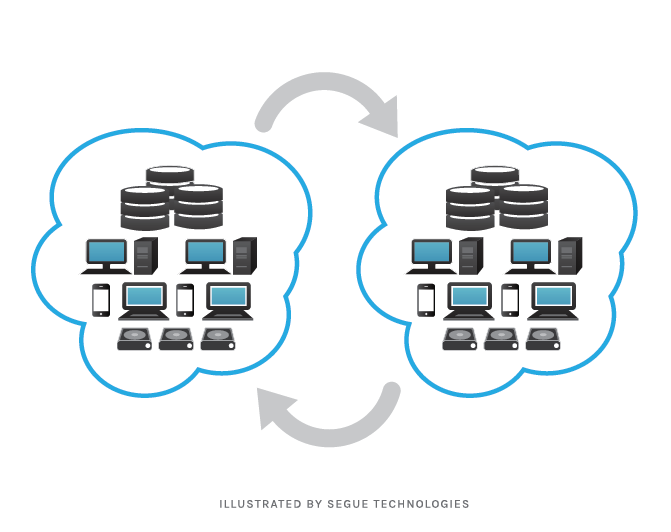Whether your data-center is full of stand-alone servers, or cloud hosted systems utilizing virtual environments, one of the biggest risks to either site is an incomplete disaster recovery plan. The disaster recovery plan should detail more than just data backup procedures. In the event of a network outage, which impacts your critical business systems, it is important to maintain an appropriate level of redundancy to allow your business processes to resume ASAP.
The adage “time is money” has never been more true, than it is today. Businesses can lose out on thousands, or millions, of dollars in revenue due to a system outage. Part of your disaster recovery plan should contain the level of backup that is necessary to be maintained to minimize impacts of those outages on your uptime. Disaster recovery sites come in three stages: Hot sites, cold sites, and warm sites. Let’s review each briefly.
Hot Site
Hot sites are essentially mirrors of your datacenter infrastructure. The backup site is populated with servers, cooling, power, and office space (if applicable). The most important feature offered from a hot site is that the production environment(s) are running concurrently with your main datacenter. This syncing allows for minimal impact and downtime to business operations. In the event of a significant outage event to your main datacenter, the hot site can take the place of the impacted site immediately. However, this level of redundancy does not come cheap, and businesses will have to weigh the cost-benefit-analysis (CBA) of hot site utilization.
Cold Site
A cold site is essentially office or datacenter space without any server-related equipment installed. The cold site provides power, cooling, and/or office space which waits in the event of a significant outage to the main work site or datacenter. The cold site will require extensive support from engineering and IT personnel to get all necessary servers and equipment migrated and functional. Cold sites are the cheapest cost-recovery option for businesses to utilize.
Warm Site
A warm site is the middle ground of the two disaster recovery options. Warm sites offer office space/datacenter space and will have some pre-installed server hardware. The difference between a hot site and a warm site is that while the hot site provides a mirror of the production data-center and its environment(s), a warm site will contain only servers ready for the installation of production environments. Warm sites make sense for aspect of the business which is not critical, but requires a level of redundancy (ex. Administrative roles). A CBA conducted on whether to use a warm site versus a hot site should include the downtime associated with the software-loading/configuration requirements for engineering.
Unplanned outages can severely risk a business’ ability to generate revenue, and service clients. A disaster recovery site can help mitigate the impact of those outages on production systems. Business owners need only add this detail to their disaster recovery plans to ensure collective peace-of-mind in the event of an emergency.



